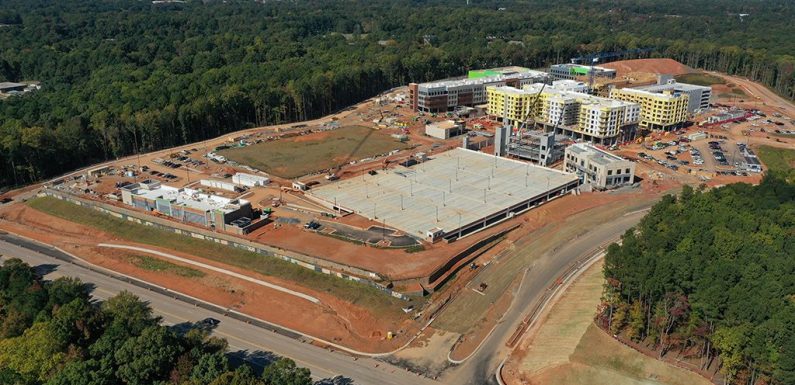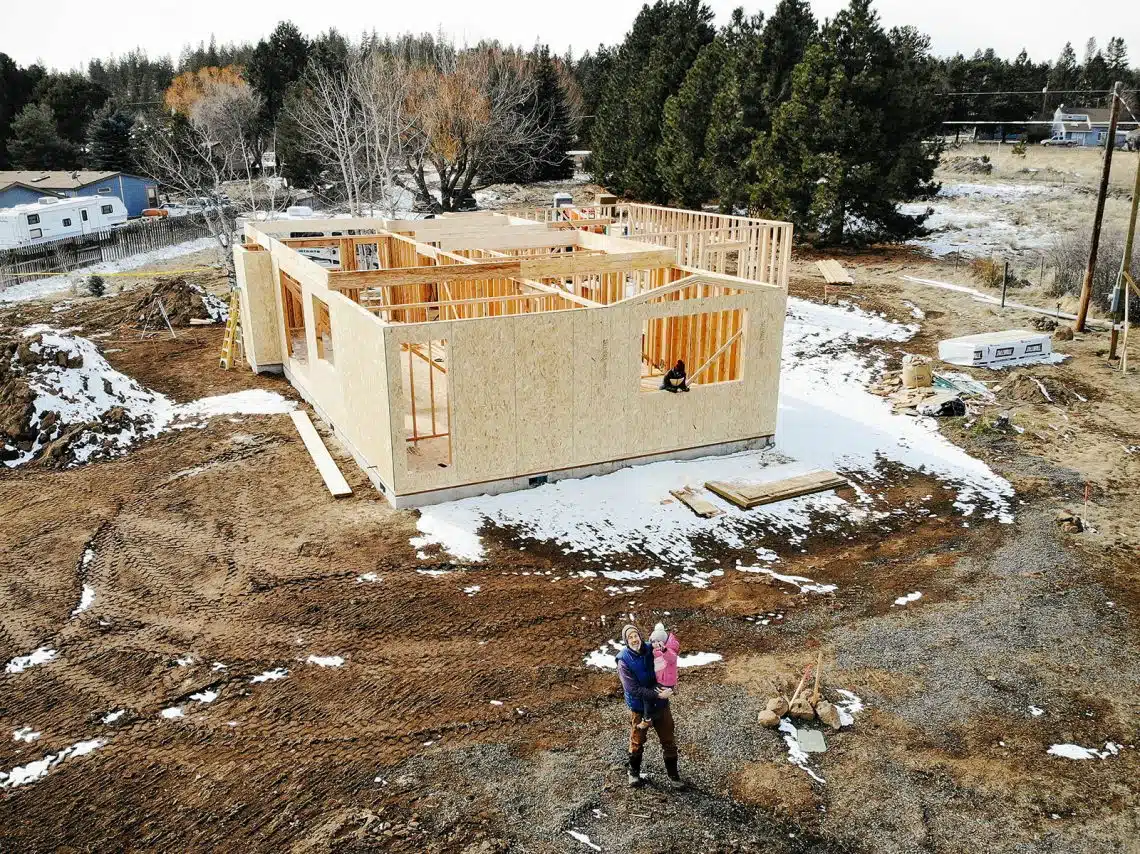
It can be difficult to obtain information about construction happening in your neighborhood or upcoming developments if you’re new to the area. However, it’s crucial to stay informed about major new developments as they can affect property values, local tax rates, traffic patterns, school capacity, and overall community. This article provides tips on what is being built near me and how to uncover details on new buildings being built in your locality.
Check Online Maps and Satellite Images
One of the quickest ways to spot new construction is by comparing recent satellite images of your neighborhood in online map services like Google Maps/Earth or Bing Maps. Zoom in on your block or the surrounding area and scan for changes. Pay attention to vacant lots, previously razed buildings, open fields near commercial zones, or anywhere major excavation and foundation work may indicate larger projects underway.
Toggle between older saved street views and the latest aerial shots. New foundations and frames visible from above are solid clues. While easy to access, maps and images may only show structures midway through construction. But they help approximate start dates and serve as a springboard for further research into mysterious projects.

Search Property Records and Permit Databases
Most counties and towns maintain public databases of permits applied for or granted to develop land, demolish existing buildings, and construct new ones. Property records also show when a vacant parcel changes hands or gets rezoned. Tracking these paper trails sheds light on who owns a piece of land in flux and what they filed to build on it.
Start by Googling “[your city/town/county] GIS property records” or “[your city] building permits.” Government sites vary widely in their interactive features. Some let you search addresses and zoom maps to aerial views overlaying property lines. Others provide links and explanations for decoding the assessor’s parcel numbers identified in records. Printed permit documents reveal project dimensions, value, completion timeline, owner contacts, and other nuts and bolts.
Development proposals posted early in the approval process may provide even more specifics than permits on the scope of substantial new structures in the pipeline.
Leverage Social Media Feeds
Local civic associations, neighborhood watches, community boards, planning committees, construction firms, real estate brokers, city council members, and journalists covering development news all maintain social media feeds packed with early info on projects big and small.
Follow relevant Facebook, Twitter, NextDoor, LinkedIn groups, etc. to turn up renderings, boundary maps, fact sheets, public notices, hearing schedules, committee votes, and complaints or debates regarding projects in progress. Hashtags like #development, #construction, and your town name also help surface posts.
Social media often covers smaller infill buildings that fly under the media radar but still impact their surroundings. Posts can also reveal the context and political pressures behind proposals that basic permits lack.
Check Semi-Official Property/Development Websites
Many larger construction projects now launch slick websites even before breaking ground. Developers install “official-looking” city planning department domains meant to resemble government property profiles or zoning files. Domains to look for include your town name plus “development.com,” “property.com “projects.com,” or “buildings.com.”
Semi-official websites paint proposals in the best light with artists’ renderings, faux endorsements, upbeat FAQs, comments from fake “residents,” etc. But they also share genuine project boundaries, unit counts, height, uses, opening timelines and other facts conveniently avoided on permits. Expect deception alongside transparency.
Search must center on the physical property location itself rather than just Googling proposed development names possibly unfamiliar to you. Finding the right sites takes persistence across search engines, map services, social media tags, etc.
Attentively Read Local Newspapers
While dwindling, many print and online local newspapers still closely track real estate deals, new construction plans filed, zoning changes requested, debates over development proposals, building department approvals, community reactions and more within their coverage area. Reading this news carefully keeps residents surprised by sudden changes to a degree.
Papers also cover smaller buildings unlikely to garner social media or industry attention until literally going up next door. Bookmark paper sites and signup for news alerts on relevant zoning, planning, development, and construction topics. Stories also reference filed permits searchable later for specifics.
Call Town/City Planning and Building Departments
If online searches, social media feeds, and local reporting still leave you guessing about certain structures-in-progress near you, pick up the phone! Most municipal and county planning departments maintain public phone numbers to field development inquiries without needing in-person visits. Staff can clarify basics like project types, sizes, contacts, timelines and approval requirements for proposals they have on file.
Building department staffers can explain what types of permits were granted to mystery addresses and for what purpose, reveal expected completion dates, and provide builder contacts. They can also clarify complex zoning codes and proposal histories for pending projects. Note that smaller towns may handle planning and building inquiries through general administration phone numbers.
Formally Request Public Records
If polite phone inquiries don’t produce straight answers on projects that could substantially impact you, double back and formally request relevant public records, including pre-development proposals, permits applied for, zoning changes requested, builder contracts, traffic studies, environmental assessments, or other documents that local laws require governments to share.
Submit written requests through official municipality email contacts designed for this purpose. Detail the specific records sought and tie them to impacted addresses or neighborhood boundaries. This puts agencies legally on notice to provide information. Follow procedures for allowable fees so applications proceed smoothly. Relevant records unlocked give clarity.
Attend Public Hearings
Most sizable development projects require public hearings at some stage where residents can demand specifics and get questions answered by agencies or builders face-to-face. Hearings happen during zoning changes, project funding votes, environmental approvals, special waivers, and more.
Notices must run ahead of time in designated government sections of print/online papers or websites detailing the development name, location, changes proposed, etc. Speaking in-person holds builders publicly accountable. Bring visual aids asking for clarification on puzzling facets of plans. Hear directly about intended benefits alongside unmentioned downsides. Other attendees may share important nuances.
Go Straight to Building Sites
If all else fails, put on old shoes and literally walk the perimeter of mystery construction sites in your area. Safely and legally view the action from borders of the property itself along access roads, sidewalks or other public rights of way adjacent.
Document visible features with smartphone photos and videos, like posted notices, equipment on site, foundation forms, fuel tanks, piles of construction materials, etc. that provide clues. Long zoom lenses capture even more through fence slats. Jot a detailed description onsite while impressions remain fresh.
Canvas building crews on site during allowed hours for candid insights on a project’s purpose and components. Workers on break may open up over coffee. Just use common sense, avoid trespassing and don’t interfere.

Ask Surrounding Neighbors
A construction site naturally impacts nearby dwellers first. Chat up immediate neighbors around new structures tipped off by shaken walls, blocked views, floodlights glaring into windows overnight, cement trucks rumbling by, road detours and other nuisances development brings. Those aware often need outlets to vent specifics!
Ask pointed questions face-to-face about changes witnessed from their vantage points, site prep observed from windows, equipment types coming and going, builder contacts, posted paperwork, temporary inconveniences, and possible permanent effects feared once projects finish.
Listen with empathy to earn conversational trust yielding the best intelligence. Even mere rumors passing from neighbor to neighbor can prove surprisingly accurate when aggregated, guiding deeper investigation. Just take what you hear with grains of salt.
FAQs
What basic details should I collect when I spot new buildings under construction near me?
When passing work sites, quickly jot the exact address, block intersection, size of building/land disturbance, types of equipment or materials visible, any posted signs or notices, stages of progress, trucks and worker uniforms pointing to builders, etc. Even snapshots on phones tagged with locations assist later online searches using these fresh details when safely possible. Vague inquiries go nowhere.
Where can I access official records on developments near me besides government websites?
Every municipality maintains physical offices housing paper records not found online covering land use proposals, permit applications, zoning petitions, planning reviews, builder contracts, public hearing legal notices, environmental impact reports and more. Visiting these departments in-person allows digging deeper for documents unavailable remotely. Staff assists navigating archives.
What common public hearings offer the best chance to directly question builders of projects concerning me?
Zoning appeals to change land from current uses to those allowing builders’ intended projects almost always require locally-advertised public hearings before going forward. These meetings offer concerned citizens rare access to developer representatives and approving agencies to demand details, projections, mitigations, benefits, accountability – usually ahead of final approvals.
Can I realistically influence changes to concerning construction plans in my neighborhood?
Yes, résistance and counter-proposals from informed, reasonable citizens at public hearings help shape projects – blocking unreasonable components, improving public benefits, requiring protections of adjacent owners. Solid turnouts against aspects of plans pressure approvers and builders to adapt – within practical limits – even if projects proceed largely intact. Persistence pays partial dividends.
Do smaller residential rebuilds and infill projects undergo much public scrutiny beforehand?
Unfortunately, zoning laws allow fairly permissive redevelopment of sites already hosting homes into larger, taller, denser buildings with limited oversight compared to undeveloped land. This facilitates neighborhood change one lost bungalow at a time. Tracking property transactions, permit requests and demolitions provides only slight notice. Maintaining community ties remains key.
Conclusion
Discovering details on new buildings popping up near you demands diligence, tapping a mix of online resources, public records, news reports, social media posts, agency inquiries, site visits, conversations with stakeholders, and open records requests to extract clarity from layers of bureaucracy. But sticking to it pays dividends for staying reasonably informed and shaping your surroundings. Just don’t rely on partial answers from any one source, as different puzzle pieces reveal the full picture. The influence of San Diego construction companies in the community extends beyond erecting structures; it encompasses maintaining awareness, implementing preparative protections, and minimizing nasty surprises, exemplifying a commitment to constructive influence that aligns with the principles of public transparency for the benefit of the neighborhood.

